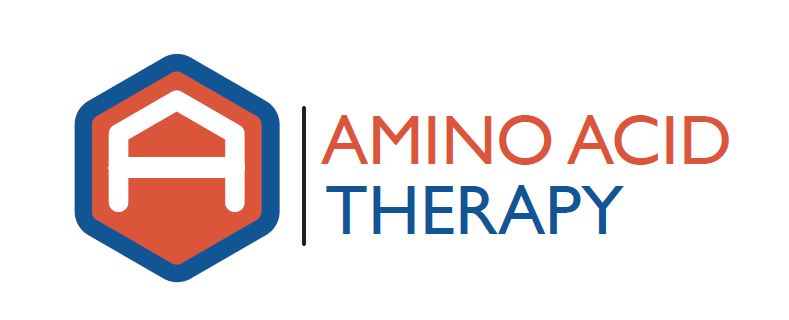by aatadmin | Aug 25, 2016 | Amino Acid Therapy, Neurotransmitters
 Parkinson’s disease is a progressive neuro-degenerative disease. That is, the disease progresses as more and more neurons are destroyed. The ideal approach is to catch the disease as early as possible so that full function can be restored. This occurs when there are enough dopaminergic neurons remaining, that when given the proper amount and balance of amino acid precursors, are able to compensate for the damage.
Parkinson’s disease is a progressive neuro-degenerative disease. That is, the disease progresses as more and more neurons are destroyed. The ideal approach is to catch the disease as early as possible so that full function can be restored. This occurs when there are enough dopaminergic neurons remaining, that when given the proper amount and balance of amino acid precursors, are able to compensate for the damage.
However, without proper intervention, the neurodegenerative process will continue. If enough dopaminergic neurons are destroyed, no amount of amino acids will be able to completely restore proper function. Unfortunately, this often occurs when people with Parkinson’s disease attempt to exhaust all other options before implementing amino acid therapy. While these people benefit greatly from amino acid therapy, most do not achieve complete relief of symptoms due to the extent of the neurodegeneration.
Therefore, a person with Parkinson’s disease should implement a course of properly guided amino acid therapy as soon as possible to obtain optimal results. All other therapy options are associated with a progression of the disease. Unlike the medical approach of using L-DOPA/carbidopa, amino acid therapy needs to be implemented as early as possible to optimally manage the symptoms of Parkinson’s disease.
For more information on Amino Acid Therapy and Parkinson’s, click here.

by aatadmin | Jul 19, 2016 | Amino Acid Therapy, Neurotransmitters
Neurotransmitters are a class of chemical messengers in the body that help regulate many body functions. Most people have heard of several common neurotransmitters, including serotonin, dopamine, norepinephrine and epinephrine (also known as adrenaline) and are familiar with some of their functions in regards to mood and sleep. What many people do not know is that your neurotransmitter balance may dramatically affect your ability to lose and maintain your weight.
(more…)

by aatadmin | Jun 14, 2016 | Amino Acid Therapy, diabetes, fibromyalgia, nerve pain, Neurotransmitters
Amino acid therapy involves the therapeutic use of specific amino acids and cofactors to help reestablish proper neurotransmitter function. Amino acid therapy is commonly used to help with symptoms associated with depression, anxiety, insomnia, migraines, compulsive behaviors, trichotillomania, addictions, restless legs and even Parkinson’s disease.
(more…)

by aatadmin | Jun 2, 2016 | Amino Acid Therapy, restless legs
Many people suffer from something called “Restless Leg Syndrome” or RLS. The most common symptom is feeling a near-constant need to move the legs when at rest, like when they are lying down to go to bed or relaxing in a chair. However, it is also very common for people with RLS to have discomfort and/or pain in their legs that won’t go away or to experience tingling and itching legs, especially at night. Luckily, there are some very effective ways to improve and even eliminate these symptoms.
(more…)

by aatadmin | May 25, 2016 | Amino Acid Therapy, Neurotransmitters
When most people think about neurotransmitter imbalances, they think of things like depression, insomnia and obsessive-compulsive disorders. That’s because the medications used to treat these disorders often try to shuffle around neurotransmitters in an attempt to relieve symptoms.
However, many, many disorders may have neurotransmitter imbalance as a key underlying cause, including not only those listed above, but also migraine headaches, memory issues, poor focus and concentration, restless legs, hormone imbalances, fatigue, Parkinson’s disease and even some gastrointestinal imbalances like Crohn’s disease. In order to achieve a lasting solution we must heal the underlying causes of any chronic illness. For the conditions listed above, this usually means we have to restore neurotransmitter levels using amino acid therapy.
Causes of Neurotransmitter Imbalance
There are numerous possible reasons and ways neurotransmitter function can be compromised, including stress, toxic burden, head or neck trauma, nutritional deficiency, chronic pain, genetics and certain medications. Most people are affected by several of these at once, and once neurotransmitter function is sufficiently impaired, symptoms develop.
Even though there are many possible causes of neurotransmitter imbalance, there are really only two major effects on the body. There is either (1) neurotransmitter depletion and/or (2) damage to the post-synaptic neuron. In the first case, restoring optimal neurotransmitter levels and stores using amino acid therapy can quickly and effectively eliminate the nutritional deficiency and alleviate symptoms. In the second, amino acid therapy can often overcome the damage to the neurons and improve if not restore proper function.
Using Amino Acid Therapy to Restore Neurotransmitter Function
Neurotransmitter imbalances can cause a whole host of symptoms, ranging from depression and anxiety, to migraine headaches, hormone imbalances and cravings. The reason for this is that neurotransmitters are chemical messengers that your brain and body uses to send and receive vast amounts of information on a daily basis. Imbalances in this communication system lead to miscommunication, which you experience as symptoms.
By restoring proper neurotransmitter function using amino acid therapy, we can help improve and optimize communication, which will alleviate the symptoms related to neurotransmitter imbalance. Amino acid therapy can provide a very effective way for many people to heal a key underlying cause of whatever chronic condition or illness they have and provide a safe and effective way to alleviate their symptoms.


by aatadmin | Apr 19, 2016 | Amino Acid Therapy
There have been some amazing findings published in the last several years in regards to managing the symptoms and progression of Parkinson’s disease using natural methods. Most of these papers have been written or co-written by Marty Hinz, MD. What Dr. Hinz has shown is that it is possible in many cases to manage the symptoms associated with Parkinson’s disease while eliminating the potentially devastating side effects of the drugs used in the medical treatment of Parkinson’s disease using amino acid therapy.
Dr. Mary Hinz and Parkinson’s Therapy
I began working with Dr. Hinz back in 2001. At that time, much of his focus was on managing appetite in order to facilitate long-term weight loss. Over time, however, it became apparent that amino acid therapy had a much larger application.
The first paper published by Dr. Hinz in relation to Parkinson’s disease was a case study in 2011. This paper provided insight into a novel approach using the most effective therapy for Parkinson’s disease (L-dopa) which had the potential to help millions of people suffering from Parkinson’s disease.
However, it was a couple landmark papers published in 2014 that really brought Dr. Hinz’s approach to Parkinson’s disease into the national spotlight. The first paper showed that the most popular medications used to treat Parkinson’s disease (carbidopa and benserazide) could potentially cause a “nutritional catastrophe” in the body. This was shown to happen because of the adverse effect these drugs have on vitamin B6 and all the functions that vitamin B6 and B6-dependent enzymes have in the human body. The end result, according to this research, was that carbidopa may contribute to the worsening of Parkinson’s disease and the increase in the Parkinson’s disease death rate seen since the introduction of these medications.
This paper was followed by a second paper showing that carbidopa and/or benserazide may by be the causative agent of the irreversible dyskinesias associated with the progression of Parkinson’s disease. Again, the mechanism of action was found to be the “irreversible binding and inactivation of vitamin B6 throughout the body”.
A More Effective and Safer Approach to Parkinson’s disease
Based on the research of Dr. Mary Hinz, a safer and more effective approach to Parkinson’s therapy exists. The successful implementation of Dr. Hinz’s Parkinson’s Therapy requires a thorough understanding of the underlying factors that cause the symptoms of Parkinson’s disease and many years of practice, but the results can be amazing. Learn more about the causes and implementation of this therapy and if you are ready to get started, please contact us.
 Parkinson’s disease is a progressive neuro-degenerative disease. That is, the disease progresses as more and more neurons are destroyed. The ideal approach is to catch the disease as early as possible so that full function can be restored. This occurs when there are enough dopaminergic neurons remaining, that when given the proper amount and balance of amino acid precursors, are able to compensate for the damage.
Parkinson’s disease is a progressive neuro-degenerative disease. That is, the disease progresses as more and more neurons are destroyed. The ideal approach is to catch the disease as early as possible so that full function can be restored. This occurs when there are enough dopaminergic neurons remaining, that when given the proper amount and balance of amino acid precursors, are able to compensate for the damage.






